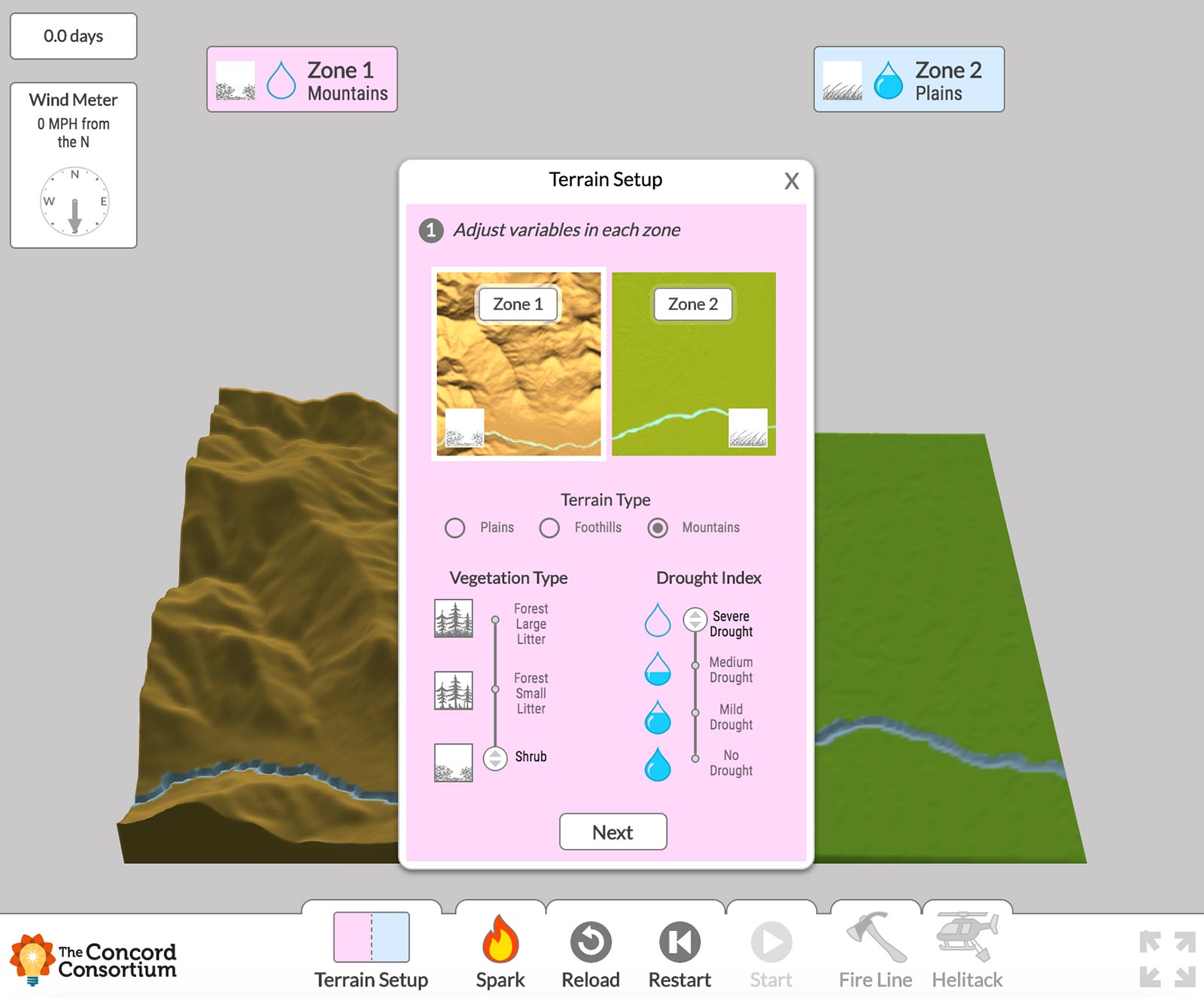“A new fire has started every day in Utah since May 17. Hot, dry conditions mean more could spark soon.” This was the shocking headline of a June 10 article about wildfires in one Western state. The National Interagency Fire Center, the nation’s support center for wildland firefighting, is currently tracking large fires in Utah and seven additional states, including many on the West Coast, plus some in Florida. Warmer, drier weather has increased the risk of wildfires not only in parts of the United States, but also across the globe.
As part of our GeoHazard project, we’re developing and researching innovative Earth science educational materials to help students interpret data and understand the factors influencing the progression of and the risks associated with natural hazards—including hurricanes, floods, and wildfires. A new week-long curriculum module for middle and high school students uses real-world case studies and an online interactive simulation to explore key variables that influence the spread and severity of wildfires, consider the impacts of fire and smoke damage, and make predictions about how climate change may affect future wildfires. Students consider the module’s guiding question: How will wildfire risks and impacts change over the next 100 years?
We’re looking for 60 middle and high school teachers to participate in our Wildfire Module Field Test during the 2021-2022 school year. Participating teachers will receive a stipend. Learn more and apply!
The Wildfire Module includes five 45-minute activities:
Activity 1: Feelin’ Hot, Hot, Hot! Students investigate wildfires in the western U.S., explore real-world data on the frequency of wildfires and the acres burned, and come up with their own ideas about the trends in the data and what might be causing fluctuations. They consider what makes wildfires hazardous and how they impact people and their communities.
Activity 2: Earth, Wind, and Wildfire. Students investigate the roles that different factors play on wildfire spread, and use the Wildfire Explorer model to change variables like moisture content (drought level), wind speed and direction, and topography (slope of terrain).

In the Wildfire Explorer Terrain Setup window, students change input parameters to observe how each variable influences wildfire spread.
Activity 3: Growth of a Wildfire. Students study how wildfire behaves when fueled with different vegetation. They learn how the public policy of wildfire suppression has left a large amount of fuel in forests to burn, and consider both short-term actions like fire suppression and longer-term actions, including the effects of climate change, on the impact of wildfires on people.
Activity 4: Risky Business. Students explore the hazards and risks caused by wildfires, using the Wildfire Explorer model to consider factors that make wildfires more or less of a risk to people in different communities. They also explore mitigation plans.
Activity 5: Wildfires in the Future. Students investigate how climate change correlates to projected changes in wildfire frequency and intensity. They use Wildfire Explorer to model wildfire spread during extreme droughts. Students return to the framing question and consider: How will wildfire risks and impacts change over the next 100 years?
Teacher support materials, including an interactive Teacher Edition of the module with background information, teaching tips, exemplar student answers, extensions, and other tools for success are available. If you’re interested in trying this innovative curriculum in your middle or high school science class, apply now to be a field test teacher. As wildfires become more frequent and devastating, more students need to develop scientific reasoning in the context of risk in order to mitigate geohazard disasters.
2 thoughts on “Field Testers Needed for Innovative Wildfire Curriculum”
Comments are closed.
I would be interested in exploring this program in the fall. I would be interested in time commitment, stipend and requirements.
This sounds extremely engaging! Will the high school curriculum be more challenging than the middle school curriculum?
I am interested!